In the ever-evolving world of blockchain, the term “permissionless” holds significant weight. It represents a paradigm shift in how data is shared, transactions are processed, and trust is established – all without the need for centralized control. But what exactly does it mean, and how does it translate to the realm of permissionless blockchains?
What is Permissionless?
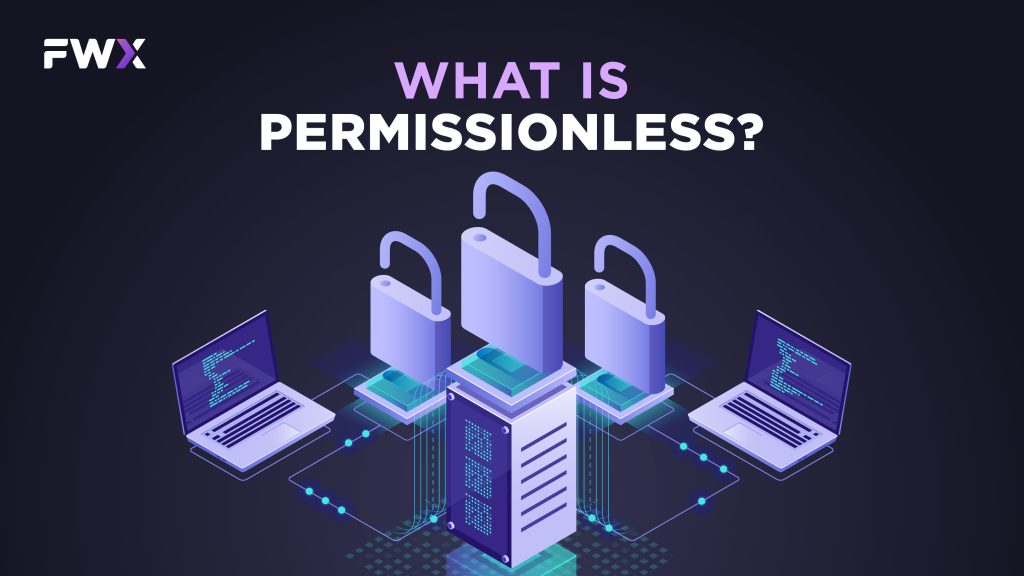
The term “permissionless” can have different meanings depending on the context. However, in the world of technology, it generally refers to something that is open and accessible to anyone without requiring permission or authorization. This can apply to a variety of things, such as:
- Software: Permissionless software is typically open-source software that anyone can download, use, and modify without needing permission from the original developer.
- Data: Permissionless data is data that is freely available to anyone to access and use, without any restrictions.
- Networks: Permissionless networks are networks that anyone can join and participate in, without needing to be approved by a central authority.
What is Permissionless Blockchain?
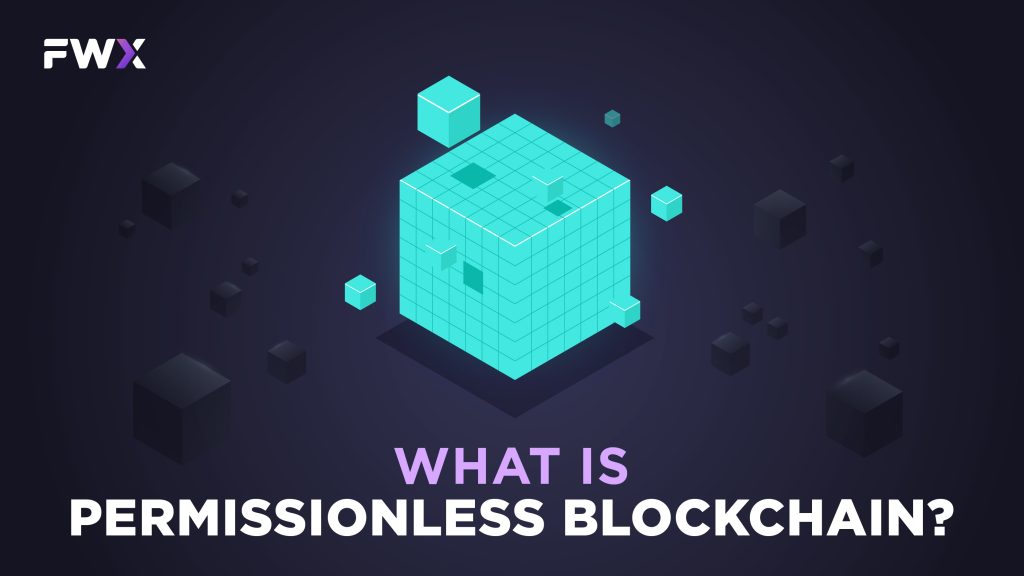
A permissionless blockchain is a type of blockchain network where participants can join, validate transactions, and contribute to the network’s security without requiring explicit permission from a central authority. This contrasts with permissioned blockchains, where access and participation are restricted and controlled by a central entity. The permissionless model is a core principle of many popular cryptocurrencies and blockchain platforms, such as Bitcoin and Ethereum.
Key characteristics of Permissionless Blockchain
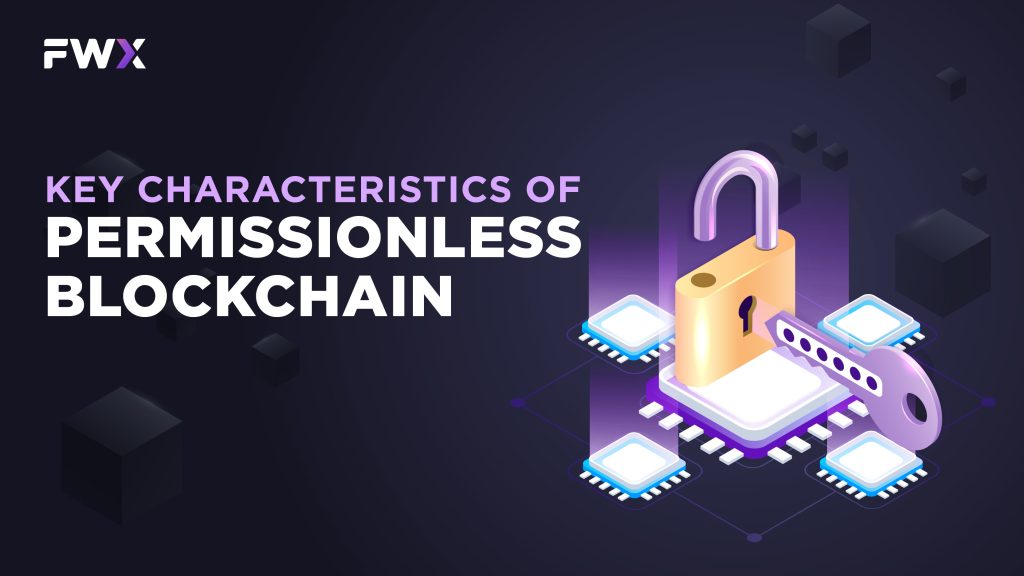
Here are some key characteristics of permissionless blockchains:
- Open Participation: In a permissionless blockchain, anyone can join the network by becoming a node in the distributed network. Nodes are participants that maintain a copy of the blockchain ledger and validate transactions.
- Decentralization: They are designed to be decentralized, meaning there is no single point of control. The power and authority are distributed among the network participants, often through a consensus mechanism that ensures agreement on the state of the blockchain.
- Censorship Resistance: Due to the decentralized nature, they are resistant to censorship. Transactions are typically recorded on the blockchain in a transparent and immutable manner, making it difficult for any single entity to control or censor transactions.
- Consensus Mechanisms: They use consensus mechanisms to achieve agreement on the state of the ledger among distributed nodes. Proof-of-Work (PoW) and Proof-of-Stake (PoS) are common consensus algorithms employed to secure the network and validate transactions.
- Native Cryptocurrency: Most permissionless blockchains have a native cryptocurrency that is used for various purposes within the network, such as transaction fees, securing the network through incentives, and participating in governance.
- Smart Contracts and Decentralized Applications (DApps): Permissionless blockchains often support smart contracts, which are self-executing contracts with the terms of the agreement directly written into code. This allows for the creation of decentralized applications (DApps) that run on the blockchain.
- Inclusivity and Financial Inclusion: They promote inclusivity by allowing anyone with an internet connection to participate. This is particularly significant in regions where traditional banking infrastructure is limited, providing financial inclusion opportunities.
- Trustless Transactions: Participants in a permissionless blockchain can transact directly with each other without the need for trust in a central authority. The blockchain’s transparent and tamper-resistant nature ensures the integrity of transactions.
Permissioned vs Permissionless Blockchain
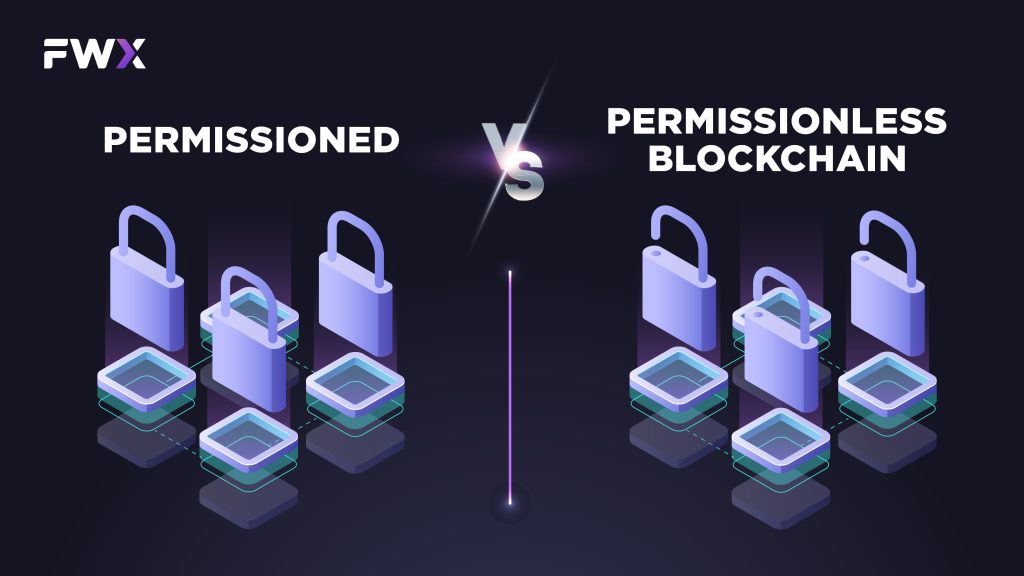
Permissioned and permissionless blockchains represent two fundamentally different approaches to organizing and governing blockchain networks. Here’s a breakdown of the key differences between the two:
Permissioned Blockchain
Access Control:
- Centralized Permissions: In a permissioned blockchain, access to the network is restricted, and participants must be granted explicit permission to join. Typically, an entity or consortium controls access to the network.
Decentralization:
- Limited Decentralization: Permissioned blockchains are often more centralized compared to their permissionless counterparts. A central authority or group of authorities maintains control over the network and its governance.
Consensus Mechanism:
- Centralized Consensus: The consensus mechanism is usually achieved through known and identified nodes or validators. Consensus methods might involve voting mechanisms, Byzantine fault tolerance, or other centralized approaches.
Transaction Privacy:
- More Controlled: Transactions in permissioned blockchains may be more private compared to permissionless blockchains, as the network is operated by known entities, and data visibility can be restricted.
Use Cases:
- Enterprise Solutions: Permissioned blockchains are often favored for enterprise solutions where a higher level of control, privacy, and compliance with regulatory requirements is essential.
Efficiency:
- Potentially Higher Efficiency: Due to a more controlled environment, permissioned blockchains might achieve higher transaction throughput and lower latency compared to some permissionless blockchains.
Permissionless Blockchain
Open Access:
- No Restriction on Participation: Anyone can join a permissionless blockchain network without requiring explicit permission. Participation is open to anyone with an internet connection and the necessary technical resources.
Decentralization:
- Full Decentralization: They aim for a fully decentralized network where no single entity has control. Decisions are often made through consensus mechanisms that involve the broader network.
Consensus Mechanism:
- Proof-of-Work, Proof-of-Stake, etc.: Permissionless blockchains commonly use consensus mechanisms like Proof-of-Work (Bitcoin), Proof-of-Stake (Ethereum 2.0), or other decentralized algorithms to achieve agreement among participants.
Transaction Privacy:
- Transparent Transactions: Transactions are typically transparent and visible to all participants on the network. While addresses might be pseudonymous, the transaction history is accessible to anyone.
Use Cases:
- Global, Public Use: They are well-suited for public and global use cases where openness, inclusivity, and censorship resistance are critical, such as in cryptocurrencies like Bitcoin.
Efficiency:
- Potential Scalability Challenges: Some permissionless blockchains face challenges related to scalability, transaction speed, and energy consumption, particularly those using Proof-of-Work.
Pros and Cons of Permissionless Blockchain
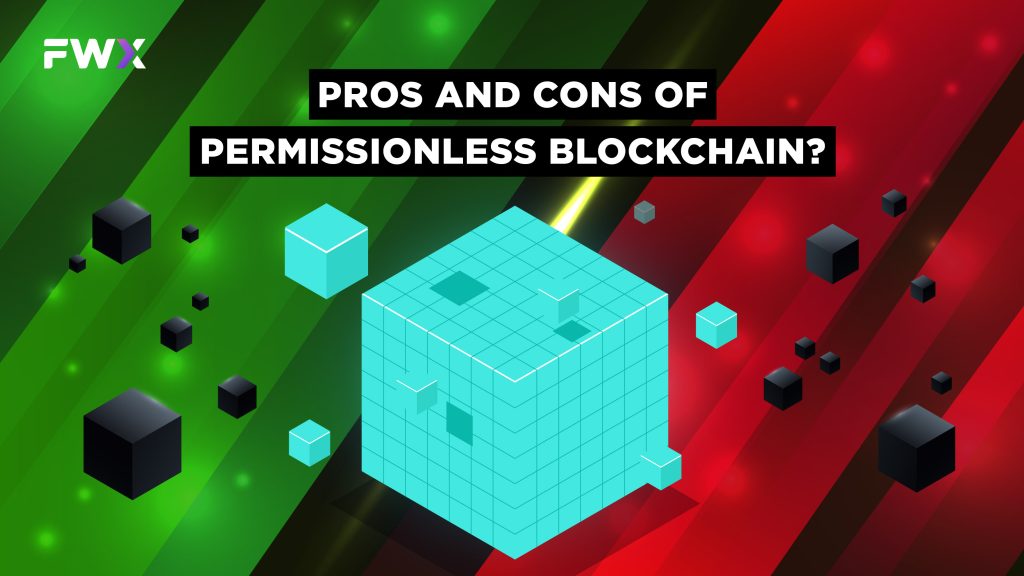
Pros of Permissionless Blockchain:
Decentralization:
- Increased Security: The decentralized nature of permissionless blockchains makes them more secure against single points of failure or malicious attacks. No single entity controls the entire network.
Censorship Resistance:
- Resistant to Interference: Permissionless blockchains are resistant to censorship since participants can transact and engage with the network without needing approval from any central authority.
Inclusivity:
- Open Access: Anyone with an internet connection can participate, promoting financial inclusion and allowing global access to the network without discrimination.
Transparency:
- Transparent Transactions: Transactions are visible to all participants on the network, enhancing trust and accountability. The transparent nature of the blockchain contributes to auditability.
Innovation:
- Open Development: They foster innovation as developers can create decentralized applications (DApps) and smart contracts without seeking permission, leading to a vibrant ecosystem.
Trustless Transactions:
- Reduced Dependency on Trust: Participants can transact directly without needing to trust a central authority, as the blockchain’s architecture ensures the integrity and immutability of transactions.
Global Payments:
- Borderless Transactions: Permissionless blockchains enable borderless transactions, making it easier to transfer value globally without the need for traditional intermediaries.
Community Governance:
- Decentralized Decision-Making: Many permissionless blockchains involve a community-driven governance model where decisions about upgrades and changes are made collectively.
Cons of Permissionless Blockchain:
Scalability Challenges:
- Network Congestion: Some permissionless blockchains face scalability challenges, leading to congestion during times of high demand, impacting transaction speed and fees.
Energy Consumption:
- Proof-of-Work Drawbacks: They use Proof-of-Work (PoW) consensus mechanisms can have high energy consumption, raising environmental concerns.
Regulatory Uncertainty:
- Compliance Challenges: The open and permissionless nature may pose regulatory challenges as some jurisdictions grapple with how to regulate decentralized and borderless systems.
Anonymity Concerns:
- Pseudonymous Transactions: While transactions are transparent, user identities are often pseudonymous, which can raise concerns regarding privacy and illicit activities.
51% Attacks:
- Security Risks: In PoW systems, there’s a risk of a 51% attack where a single entity could gain control of the majority of the network’s mining power, potentially compromising security.
Irreversibility of Transactions:
- No Chargebacks: Transactions on permissionless blockchains are typically irreversible, which may be a disadvantage in cases of fraud or accidental transactions.
Learning Curve:
- Technical Complexity: Participation in permissionless blockchains may require a certain level of technical knowledge, which can be a barrier for some users.
Governance Challenges:
- Decision-Making Complexity: Decentralized governance can be challenging, leading to disputes and disagreements within the community regarding network upgrades and changes.
In conclusion, Permissionless blockchains represent a significant step towards a more open, secure, and transparent future. While challenges remain, the potential for innovation and disruption across various industries is undeniable. As the technology matures and evolves, understanding the core principles of permissionless is crucial for navigating the exciting possibilities it unlocks.


